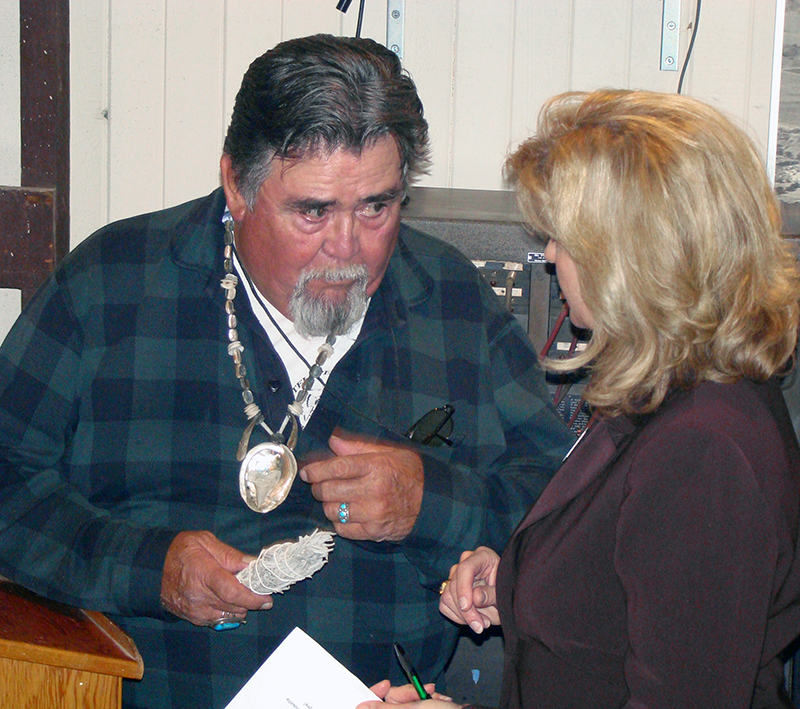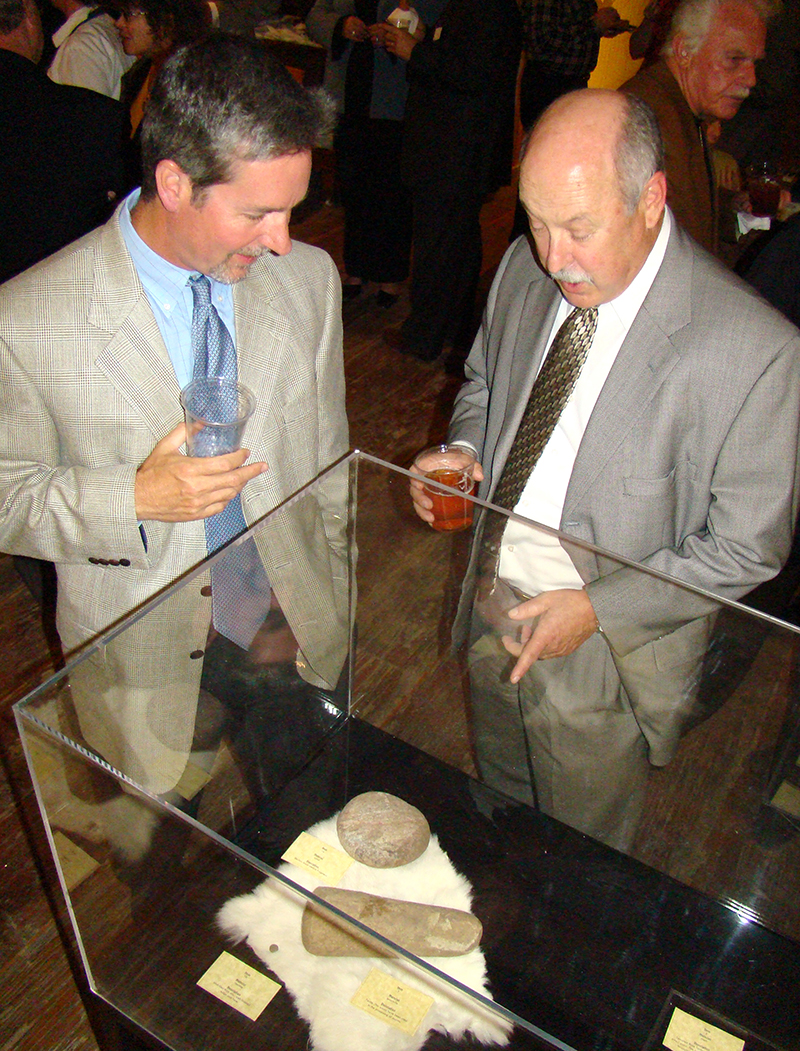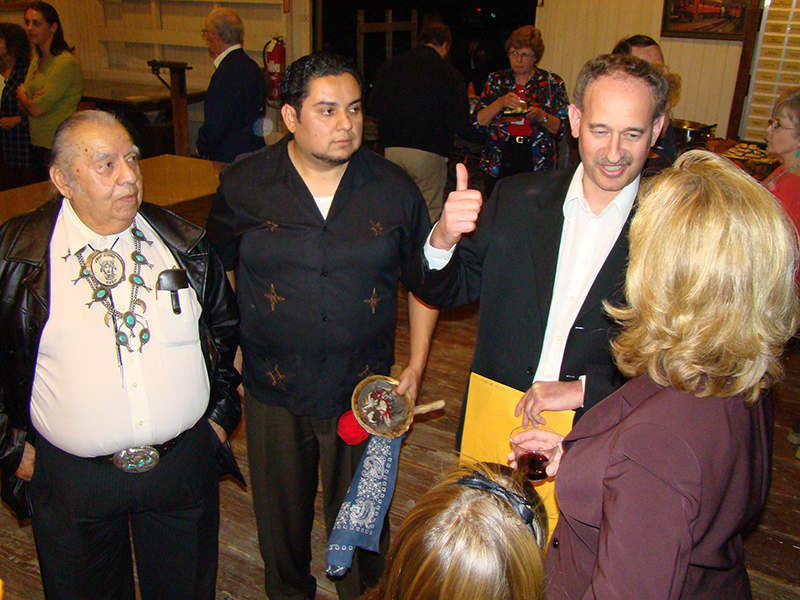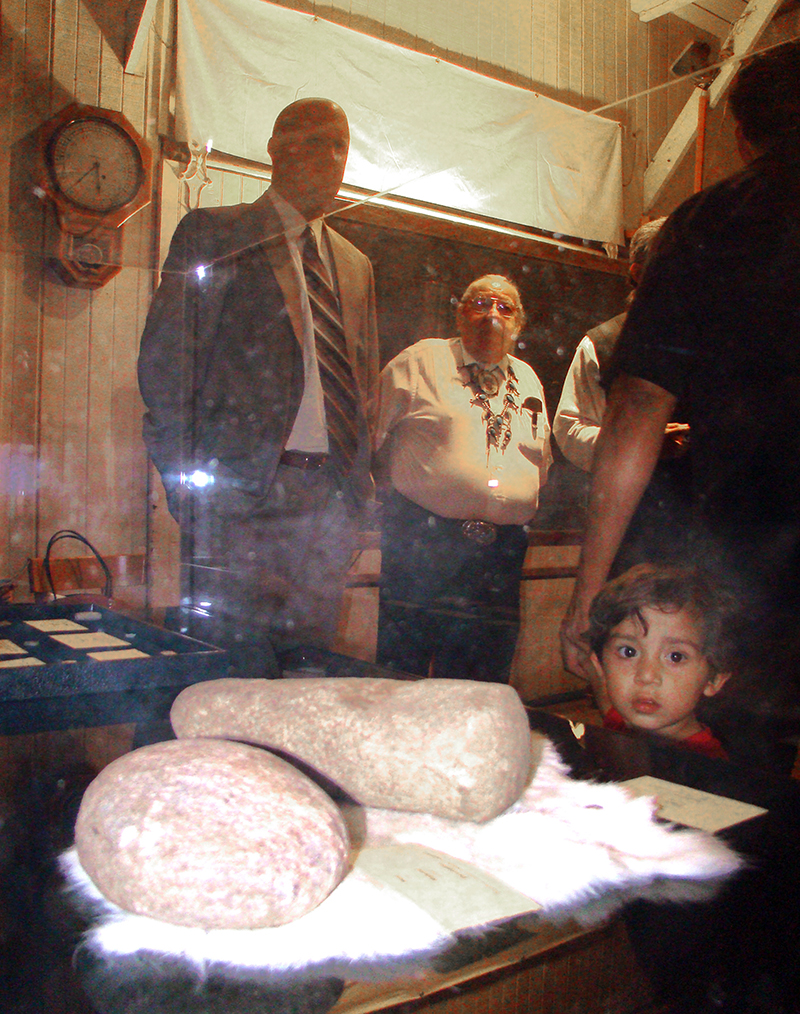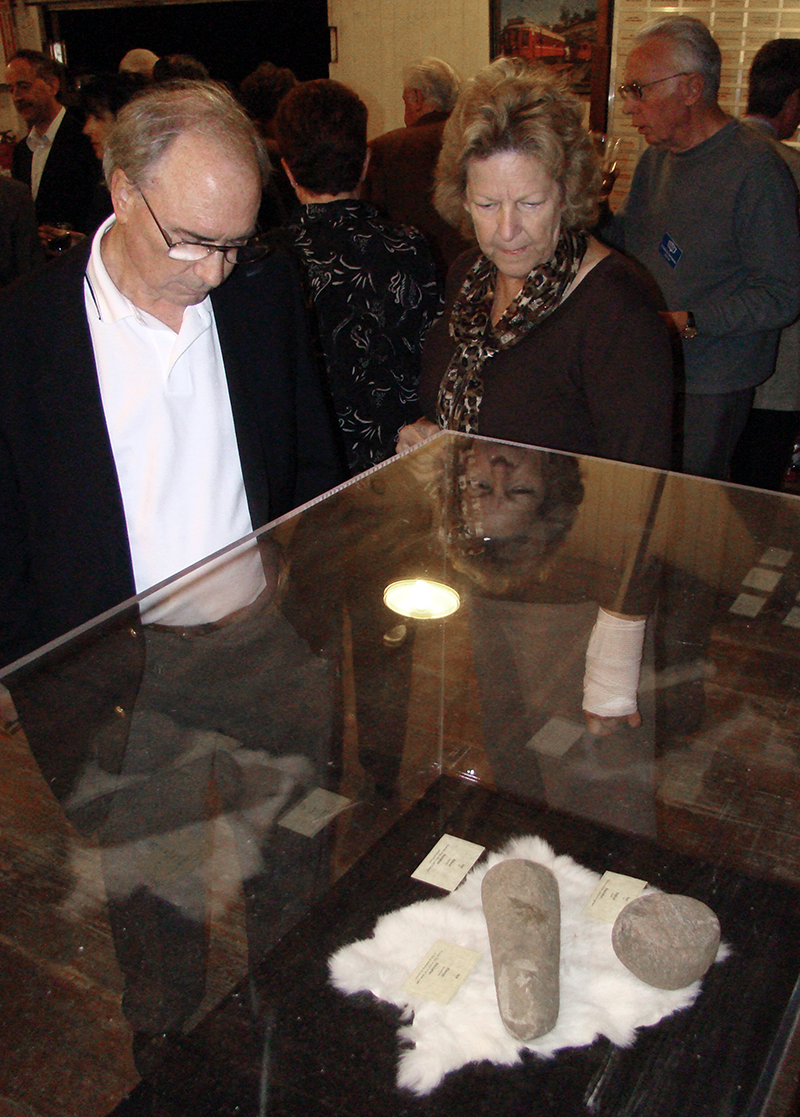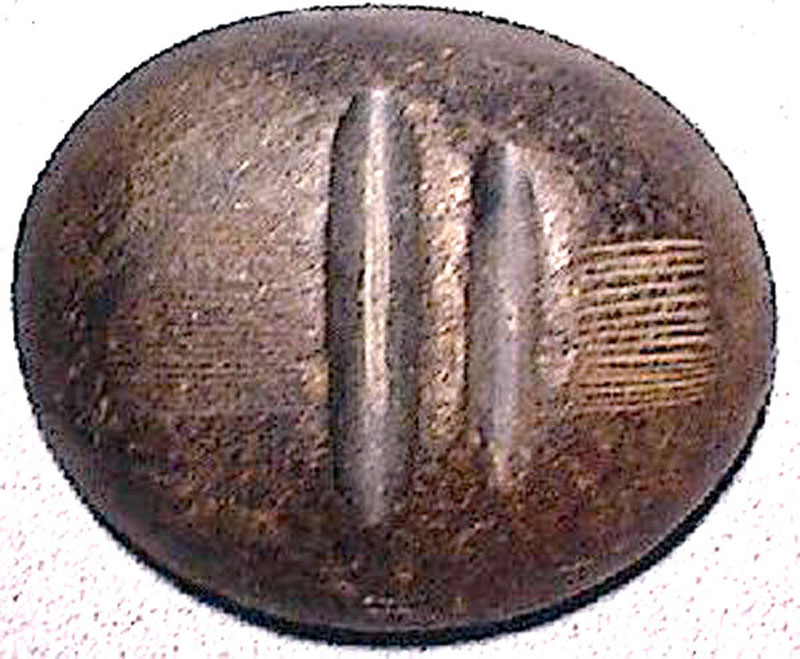|
|

Indian Relics Will Be Preserved.
Valencia Developer Donates Thousands of Artifacts to Museum in Newhall.
Old Town Newhall Gazette, Vol. 13 No. 4: November-December 2007
|
Visitors to the Saugus Train Station Museum at Hart Park in Newhall will see something new on display — or rather, something very old: more than a dozen Indian artifacts that were unearthed from a development site in the center of Santa Clarita. On display is a mere sampling of the thousands of stone tools, beads and fragments that The Newhall Land and Farming Company has donated to the Santa Clarita Valley Historical Society. All seven thousand pieces come from one section of property adjacent to Newhall Land's RiverVillage development[1] near the northeast corner of Bouquet Junction — an indication of just how rich our valley is in archaeological treasures. "Although the Tataviam lived in our valley for hundreds of years, there is still much that we have to learn about their culture. Hopefully these artifacts will shed some light," Historical Society President Alan Pollack told a crowd of 75 people during a November 15 ceremony at the train station. While his proud father, Rudy Ortega Sr. (aka Chief Little Bear) snapped pictures, Rudy Ortega Jr. of the Fernandeño-Tataviam Band of Mission Indians blessed the occasion with song and burning sage, aided by tribal elder Charlie Cooke of Castaic. The younger Ortega, aka Standing Bear, acknowledged the role of Newhall Land, the Historical Society and the city of Santa Clarita in helping preserve the relics of his extended family's history.
"Newhall Land takes great pride in our stewardship of the land, which we have been doing for over a hundred years," said Steve Zimmer, the company's executive vice president. Newhall Land was organized in 1883 following the death of Henry Mayo Newhall, who purchased much of the valley in the 1870s. The Tataviam were here far earlier, arriving about 450 A.D., around the time the bow and arrow replaced the spear as the favored hunting implement. Even they weren't the first, though; various archeological sites in the Santa Clarita Valley date back at least 3,500 years. It is not known exactly who lived here before the Tataviam. Man first arrived in Southern California between 18,000 and 25,000 years ago[2], when ice formed a land bridge across the Bering Strait. Among the donated artifacts are two dozen spear and arrow points; ninety-five groundstone tools used for grinding seeds, nuts and bulbs; and fifty-seven hammerstones used for pulping heavy foods such as agave (century plant) — all demonstrating that hunting and gathering were important subsistence activities to the indigenous peoples.
Trade items and the lack thereof among the artifacts provide clues about trading activity. While shell beads from the west are often found at local archaeological sites, none was found at this site, suggesting that its inhabitants didn't trade with the coastal Chumash. On the other hand, beads and pendants of steatite and soapstone from the east are present, suggesting trade at least with the contemporary peoples of Agua Dulce. Agua Dulce and its unique geological formation, Vasquez Rocks, were the hub of major trade routes between east and west, and north and south. As important as the artifacts are, an even more sensitive find was made during pre-development surveys of the RiverVillage property: an ancient Indian village on the banks of the Santa Clara River. Zimmer said the village is being "preserved in perpetuity" — i.e., it is being left undisturbed, underground, hopefully safe from trespassers. Pat Saletore, executive director of the Historical Society, said her troops will carefully sort through the artifacts, which have already been itemized by a professional archaeologist, and then develop a plan for sharing "duplicates" with other historically minded entities including the Placerita Canyon Nature Center, Vasquez Rocks Natural Area and Nature Center, and the Autry National Center (formerly the Autry Museum of Western Heritage). Click here for more information about the artifacts and more photos of this event. 1. When built, the housing development was named Villa Metro. 2. Note: As of 2017, a better date for the arrival of man in North America is 15,500 years B.P. The Bering Strait probably wasn't passable before about 13,200 years ago; the first people are believed to have arrived in boats carried on ocean currents.
©2007 Old Town Newhall USA.
|
Bowers Cave Specimens (Mult.)
Bowers on Bowers Cave 1885
Stephen Bowers Bio
Bowers Cave: Perforated Stones (Henshaw 1887)
Bowers Cave: Van Valkenburgh 1952
• Bowers Cave Inventory (Elsasser & Heizer 1963)
Tony Newhall 1984
• Chiquita Landfill Expansion DEIR 2014: Bowers Cave Discussion
Vasquez Rock Art x8
Ethnobotany of Vasquez, Placerita (Brewer 2014)
Bowl x5
Basketry Fragment
Blum Ranch (Mult.)
Little Rock Creek
Grinding Stone, Chaguayanga
Fish Canyon Bedrock Mortars & Cupules x3
2 Steatite Bowls, Hydraulic Research 1968
Steatite Cup, 1970 Elderberry Canyon Dig x5
Ceremonial Bar, 1970 Elderberry Canyon Dig x4
Projectile Points (4), 1970 Elderberry Canyon Dig
Paradise Ranch Earth Oven
Twined Water Bottle x14
Twined Basketry Fragment
Grinding Stones, Camulos
Arrow Straightener
Pestle
Basketry x2
Coiled Basket 1875
Riverpark, aka River Village (Mult.)
Riverpark Artifact Conveyance
Tesoro (San Francisquito) Bedrock Mortar
Mojave Desert: Burham Canyon Pictographs
Leona Valley Site (Disturbed 2001)
2 Baskets
So. Cal. Basket
Biface, Haskell Canyon
2 Mortars, 2 Pestles, Bouquet Canyon
|
The site owner makes no assertions as to ownership of any original copyrights to digitized images. However, these images are intended for Personal or Research use only. Any other kind of use, including but not limited to commercial or scholarly publication in any medium or format, public exhibition, or use online or in a web site, may be subject to additional restrictions including but not limited to the copyrights held by parties other than the site owner. USERS ARE SOLELY RESPONSIBLE for determining the existence of such rights and for obtaining any permissions and/or paying associated fees necessary for the proposed use.
